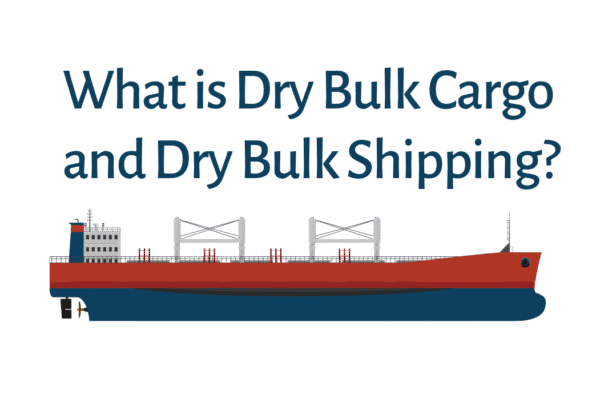On-deck shipments involve transporting cargo on the open deck of a vessel. This on deck cargo may be suitable for oversized, bulky, or perishable items that cannot fit or require special handling below deck (into the vessel holds). This method exposes cargo to adverse weather and sea perils.
Responsibility for on-deck shipments in maritime transportation lies with shipowners, who must deliver cargo safely. Although carriage contracts may exclude liability for on-deck cargo, Hague-Visby rules may still apply in respected caluses are placed on B/L and/or C/P properly.
Properly limiting liability is crucial for shipowners, who must ensure the vessel’s seaworthiness and supervise lashing operations. Failure to transport cargo as stated in documents may result in liability for the carrier, while insurers may limit coverage for on-deck cargo. The carrier’s ability to limit liability is subject to circumstances and contractual limitations.
What is On Deck Shipment, and Ship Deck Cargo?
Loading the Cargo on or above the Deck
Ship deck cargo, also known as on-deck cargo, is loaded, stuffed, or placed on the vessel’s deck instead of loading it into the closed holds. This means that under the respected contracts such as the contract of carriage and charter party, both parties have agreed on the transportation of the cargo on the deck of the vessel, in its open area, exposed to weather conditions.

”Ensuring the safety of on-deck shipments is paramount in maritime operations, demanding meticulous attention to various considerations. Secure stowage prevents cargo shifting or loss, mitigating potential accidents or damage. Weather protection shields on-deck cargo from adverse conditions, while compliance with regulations safeguards crew, cargo, and the vessel against hazards. Prioritizing safety measures ensures smooth and secure maritime voyages.
Implementing best practices for on-deck shipments is crucial for ensuring the safety and efficiency of maritime operations. One key practice is the utilization of specialized equipment such as lashings, twist locks, and dunnage to securely fasten on-deck cargo, preventing any potential shifting or movement during transit.
Regular inspections of the cargo and securing arrangements are also essential to promptly identify and address any issues or risks that may arise. Moreover, providing comprehensive training to crew members responsible for handling on-deck shipments is vital to ensure they possess the necessary skills and knowledge for proper stowage and securing techniques.
Types of Deck Shipments
Project Cargoes, Yachts and more
Ship deck cargo encompasses a diverse range of goods transported on the open deck of a vessel, offering versatility and practicality in maritime logistics. Examples of ship deck cargo include project cargo, consisting of large and heavy components for industrial ventures like wind turbine blades or bridge sections.
Additionally, smaller sea vehicles such as yachts and boats are commonly transported on deck, utilizing specialized cradles or securing systems for stability. Heavy machinery and equipment, such as industrial generators or construction gear, may also be carried as deck cargo due to their size and weight. Shipping containers, vehicles like cars and trucks, and traditional breakbulk cargo such as lumber or steel are other examples of items frequently transported on deck. While the on-deck transport method presents challenges like exposure to weather conditions and potential damage from handling operations, proper securing and management practices are essential to mitigate risks and ensure the safe delivery of goods to their destination.
Understanding UPC 600 and On Deck Cargoes
Uniform Practices Code 600
UCP 600 is a set of rules created by the International Chamber of Commerce (ICC) for letters of credit. It governs how letters of credit are issued and managed. It aims to standardize international trade, reduce discrepancies, and facilitate smooth transactions between exporters and importers.
UCP 600, introduced in 2007, sets rules for international trade transactions to ensure all parties follow the same procedures. This framework reduces misunderstandings and disputes, making global trade more efficient and reliable.
UCP 600 explains what banks are supposed to do. It also clarifies terms and conditions. Additionally, it describes how document examination and dispute resolution processes work.
UCP 600 Article 26 says transport documents cannot say goods will be on deck, but can say goods may be on deck. The term “on deck” means placing cargo on or above a ship’s deck, exposing it to weather and sea journey risks. This might be necessary for oversized or hazardous materials.
While containerized shipments are typically above deck, bills of lading usually do not state “goods shipped on deck.” However, you should note this term carefully due to potential legal uncertainties if it appears.
Banks previously accepted bills of lading with on-deck stowage for special goods if the proper insurance was provided.
ICC Opinions, like TA827rev, clarify that copies of bills are not deemed incorrect. This is because Article 26 specifically pertains to original transport documents. Perishable cargo on deck must be marked. If not allowed by the credit, refuse those bills.






